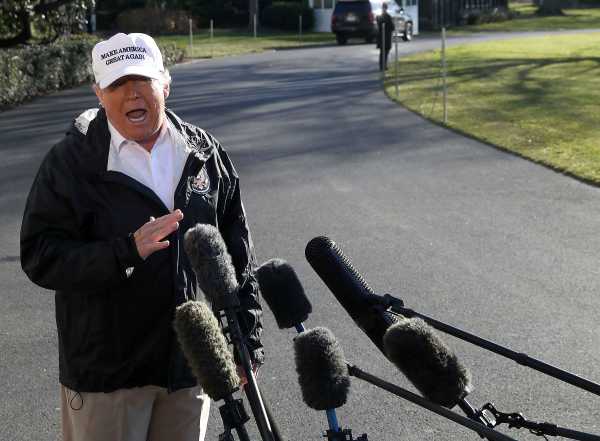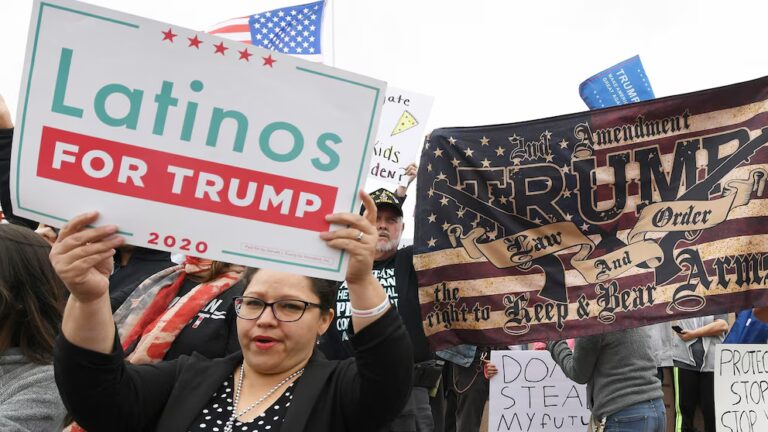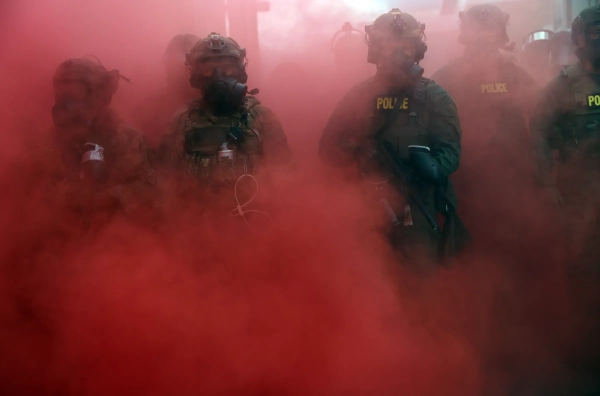
If the partial government shutdown continues for another two weeks, the economic cost will be equivalent to the amount President Donald Trump wants for his border wall, according to an analysis from S&P Global Ratings.
The US economy lost $3.6 billion by the end of the day on Friday because of the government shutdown, according to the report.
As of Saturday, the current partial shutdown is now the longest in US history. If the impasse continues for another two weeks — and it very well might — the US economy would be out $5.7 billion, the amount the White House is demanding for the border wall.
“The longer this shutdown drags on, the more collateral damage the economy will suffer,” the S&P analysts wrote. They noted that the shutdown has both direct and indirect economic costs.
Given that the US is the world’s largest economy, that amount isn’t enough to make a big dent — at least not yet. But the longer the shutdown goes on, the worse the scenario gets. And it’s already, of course, detrimental to hundreds of thousands of federal workers who are missing their paychecks, not to mention contractors who may never be paid.
Join the Vox Video Lab
Go behind the scenes. Chat with creators. Support Vox video. Become a member of the Vox Video Lab today.
Contractors that do business with the government aren’t getting paid and therefore neither are their workers, meaning less money in their pockets to spend. Contractors may eventually reduce their workforces if this goes on long enough, and while federal workers will be paid once the shutdown ends, contract workers won’t. Even many workers who will receive back pay are for the time being taking out new loans or struggling to pay their mortgages, credit cards, or rent. Some 800,000 federal workers have been impacted by the shutdown and have been furloughed or are working without pay. The first paychecks didn’t go out last week, meaning an estimated $2 billion in pay wasn’t distributed.
Furloughed employees at the Securities and Exchange Commission means a slowdown in initial public offerings, meaning companies that were expected to go public at the start of the year aren’t. Closed national parks, museums, and monuments mean canceled vacations.
The Bureau of Economic Analysis estimates that the 16-day shutdown in October 2013 resulted in a 0.3 percent reduction in real GDP growth. Ian Shepherdson, the chief economist at the research consultancy Pantheon Macroeconomics, warned in a note to clients on Monday that the shutdown is starting to do “real damage” to first-quarter economic growth. “[I]f the shutdown were to last through the whole quarter, we would look for an outright decline in GDP,” he wrote.
Federal Reserve Chair Jerome Powell said on Thursday that a prolonged government shutdown could very well affect economic growth while speaking at the Economic Club of Washington. He said in the short term, shutdowns haven’t lasted very long and haven’t left much of a mark on the economy, though he acknowledged there are “plenty of personal hardships.”
“A longer shutdown is something we haven’t had,” he said. “If we have an extended shutdown, I do think that would show up in the data pretty clear.”
Trump said last week that the shutdown could last for “months” or even “years,” though such a scenario is unlikely.
Trump and Congress could figure out a way to end this
The government shutdown doesn’t have to last for another day, let alone weeks or months, if President Trump and Congress could strike a deal.
Before the shutdown began, Trump appeared on track to pass a bill to temporarily fund the government that passed the Senate unanimously. Since Democrats took over the House of Representatives, they’ve also passed legislation that could reopen the government, if Senate Republicans would take it up and Trump would sign it. (He says he won’t.) The president has started to float the idea of declaring a national emergency to get wall money.
Trump has dug in hard on his wall demands, saying it’s essentially the $5.7 billion or nothing. Congressional Democrats have said they want to reopen the government and continue negotiations over border security. (Vox’s Dara Lind has a complete explainer of exactly what it is that the White House wants.) There are ways for the shutdown to end even without Trump — namely, Senate Republicans could join with Democrats to pass a funding bill with a veto-proof majority.
As the impasse continues and Trump stands firm on his wall-or-nothing approach, the costs continue to add up. They’re big for the federal workers and contractors directly impacted, but as time goes on, they’ll take hold in the broader economy as well. For the time being, Trump, who has staked much of his presidential success on economic growth, doesn’t seem to care.
Sourse: vox.com






